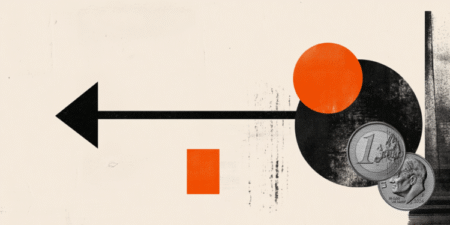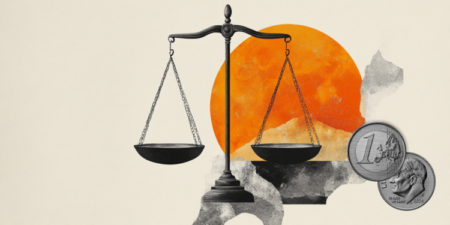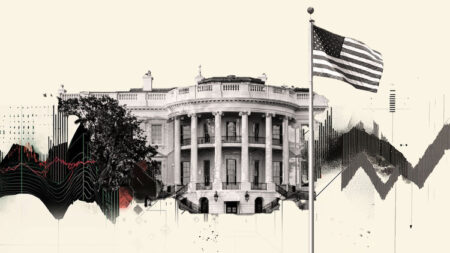- The Indian Rupee continues to weaken amid renewed USD demand from importers and persistent foreign fund outflows.
- USD/INR may face headwinds as the US Dollar comes under pressure following Moody’s downgrade of the US credit rating.
- The INR finds some support from falling crude oil prices, driven by reports of progress in US-Iran nuclear talks.
The Indian Rupee (INR) remains subdued against the US Dollar (USD) on Monday, continuing its losing streak for the sixth successive day. Moreover, fresh USD demand from importers and ongoing foreign fund outflows continue to weigh on the INR.
However, the upside of the USD/INR pair could be limited as the US Dollar (USD) came under renewed pressure following Moody’s Investors Service downgrade of the US credit rating by one notch, citing rising debt levels and mounting interest payment obligations.
However, the INR receives support from a decline in crude oil prices, amid reports of progress in US-Iran nuclear negotiations, which could help cushion the Rupee’s downside. Iran’s president reaffirmed his country’s commitment to continue talks with the US while standing firm on its nuclear rights. Given that India is the world’s third-largest oil consumer, lower oil prices generally support the Rupee by easing the country’s import bill.
Indian Rupee depreciates despite a weaker US Dollar
- The US Dollar Index (DXY), which tracks the Greenback against a basket of six major currencies, is trading lower at around 100.80 at the time of writing. The US Dollar faces challenges as Moody’s Ratings has downgraded the US credit rating from Aaa to Aa1, aligning with previous downgrades by Fitch Ratings in 2023 and Standard & Poor’s in 2011.
- Moody’s now forecasts US federal debt to rise to approximately 134% of GDP by 2035, up from 98% in 2023. The federal deficit is projected to widen to nearly 9% of GDP, fueled by mounting debt-servicing costs, increased entitlement spending, and declining tax revenues.
- A series of weak US economic indicators has reinforced expectations of rate cuts by the Federal Reserve later this year. Notably, the University of Michigan’s Consumer Sentiment Index fell sharply to 50.8 in May from 52.2 in April, the lowest level since June 2022 and the fifth consecutive monthly decline. Analysts had forecast a rise to 53.4.
- The US Dollar may find some support from easing global trade tensions. A preliminary trade deal between the US and China proposes significant tariff reductions—Washington is set to lower duties on Chinese goods from 145% to 30%, while Beijing will cut tariffs on US imports from 125% to 10%.
- Market sentiment is also lifted by renewed optimism over a potential US-Iran nuclear deal and upcoming talks between US President Donald Trump and Russian President Vladimir Putin aimed at de-escalating the Ukraine conflict.
- India’s BSE Sensex rose 3.6% last week, rebounding from the previous week’s decline. The rally was fueled by easing geopolitical tensions between India and Pakistan, growing optimism around India–US trade ties, and expectations of domestic interest rate cuts.
- Meanwhile, a high-level Indian delegation led by Minister of Commerce and Industry Piyush Goyal is set to meet with US Trade Representative Jamieson Greer and Commerce Secretary Howard Lutnick during his visit, which continues through May 20. Goyal is expected to push forward discussions on a proposed India–US bilateral trade agreement.
USD/INR rises above 85.50 amid a mixed-to-bullish bias
The Indian Rupee continues its losing streak for the sixth consecutive day, with the USD/INR pair trading near 85.60 on Monday. Technical indicators on the daily chart maintain a bullish bias, as the pair moves upwards within an ascending channel pattern. Additionally, the 14-day Relative Strength Index (RSI) remains above the 50 level, suggesting a persistent bullish sentiment.
The USD/INR pair could target its monthly high of 85.90, reached on May 9. A break above this level could allow the pair to explore the region around the upper boundary of the ascending channel at 86.40.
Immediate support lies at the nine-day Exponential Moving Average (EMA) around 85.30, followed by the ascending channel’s lower boundary at 85.10. A decisive break below this zone could undermine short-term bullish attempts and open the door for a decline toward its eight-month low of 83.76.
Risk sentiment FAQs
In the world of financial jargon the two widely used terms “risk-on” and “risk off” refer to the level of risk that investors are willing to stomach during the period referenced. In a “risk-on” market, investors are optimistic about the future and more willing to buy risky assets. In a “risk-off” market investors start to ‘play it safe’ because they are worried about the future, and therefore buy less risky assets that are more certain of bringing a return, even if it is relatively modest.
Typically, during periods of “risk-on”, stock markets will rise, most commodities – except Gold – will also gain in value, since they benefit from a positive growth outlook. The currencies of nations that are heavy commodity exporters strengthen because of increased demand, and Cryptocurrencies rise. In a “risk-off” market, Bonds go up – especially major government Bonds – Gold shines, and safe-haven currencies such as the Japanese Yen, Swiss Franc and US Dollar all benefit.
The Australian Dollar (AUD), the Canadian Dollar (CAD), the New Zealand Dollar (NZD) and minor FX like the Ruble (RUB) and the South African Rand (ZAR), all tend to rise in markets that are “risk-on”. This is because the economies of these currencies are heavily reliant on commodity exports for growth, and commodities tend to rise in price during risk-on periods. This is because investors foresee greater demand for raw materials in the future due to heightened economic activity.
The major currencies that tend to rise during periods of “risk-off” are the US Dollar (USD), the Japanese Yen (JPY) and the Swiss Franc (CHF). The US Dollar, because it is the world’s reserve currency, and because in times of crisis investors buy US government debt, which is seen as safe because the largest economy in the world is unlikely to default. The Yen, from increased demand for Japanese government bonds, because a high proportion are held by domestic investors who are unlikely to dump them – even in a crisis. The Swiss Franc, because strict Swiss banking laws offer investors enhanced capital protection.
Read the full article here
















